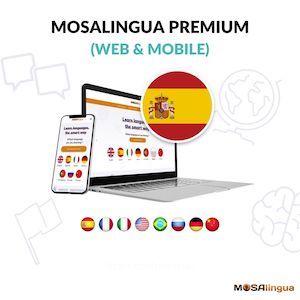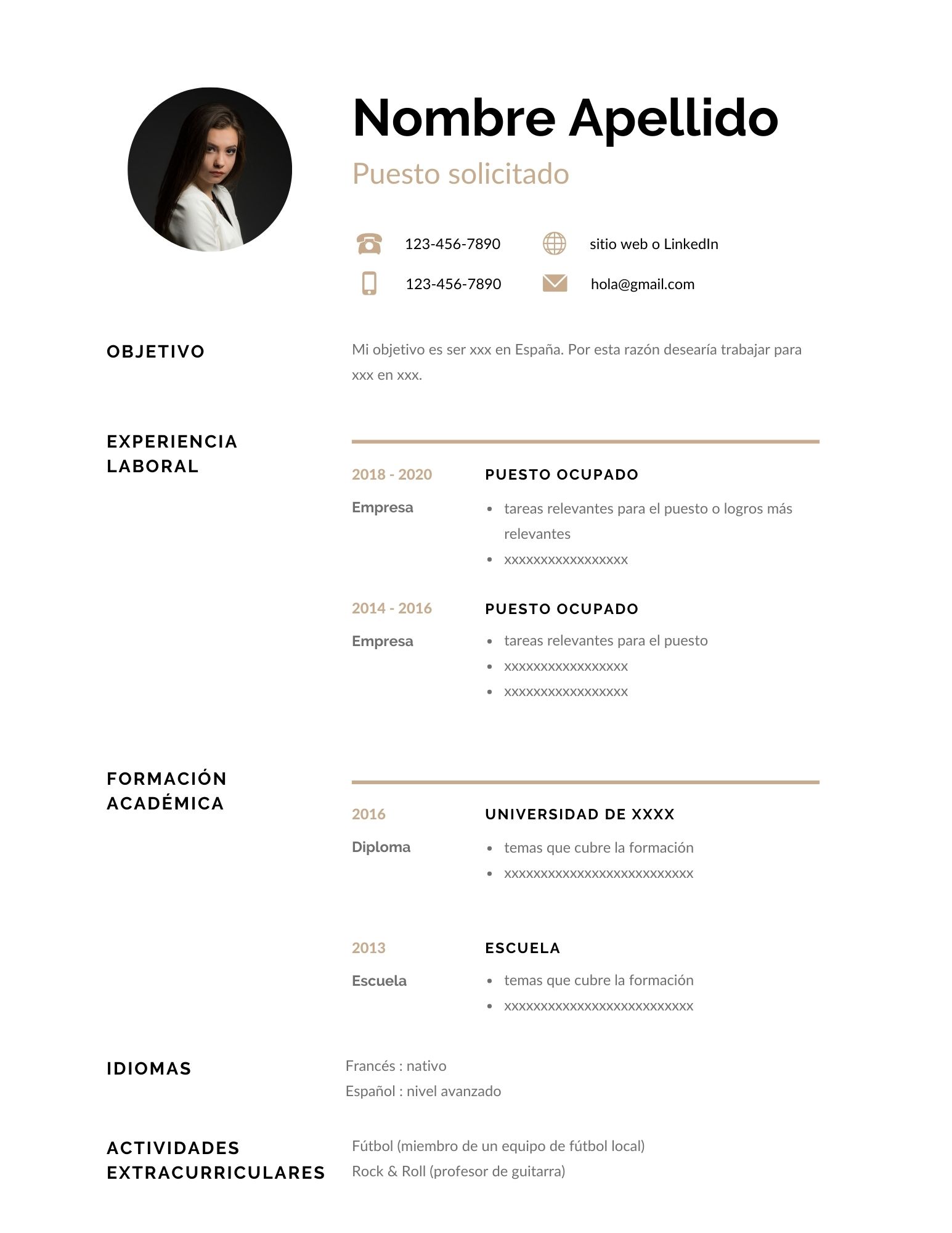When you’re applying for jobs or academic programs abroad, you’ll notice that every country has its own standards for resumes, CVs, cover letters, and even the applications themselves. So, if you’re thinking of submitting an application in Spain (or most Latin American countries), it’s probably not a good idea to just translate your resume word-for-word from English. In this article, we’ll outline some of the best practices for writing a job resume in Spanish. We’ll also highlight some important Spanish vocabulary for business, and at the end, you’ll find an example resume that you can use as a model for your own.

What’s inside…
Structure of a Spanish Resume
A work resume in Spanish isn’t entirely different from an American resume. Of course, there are a couple of unique Spanish CV format characteristics (we’ll get into that later), but you’ll probably find the overall structure somewhat familiar.
First off, similarly to American practices, try to keep your resume to one page. Divide the page into the following sections:
- Datos personales, generales o de contacto (Personal information and contact) ➡️ this should include all the relevant personal information, including your full name and contact information (professional email, phone number, any applicable websites or social media pages, your home address, etc.). One difference from the American formula is that you might also include your date of birth in this section.
- Objetivo, resumen o perfil (Objective/Summary) ➡️ one or two sentences about your application.
- Experiencia laboral (Work experience) ➡️ your past work experience, including dates of employment, company name, and job title. You can also briefly outline your responsibilities.
- Formación académica/Estudios/Formación (Education/Training) ➡️ list your degree(s), certificate(s), and the institutions you’ve attended.
- Idiomas (Languages) ➡️ the languages you speak, including your level. You can use the CEFR (European reference scale) to define your level (A1, A2, B1, B2…) or give a general description: beginner, intermediate, advanced, bilingual, etc.
- Informática (Technology) ➡️ if applicable to the position, include your relevant software and technology skills and your level.
- Actividades extracurriculares (Extracurricular activities) ➡️ this is a list of your activities outside of work: hobbies, volunteering, sports, etc.
- Información adicional (Additional) ➡️ you can add a “bonus” section with any additional information that you think is relevant to the position. For example, you could include any time you’ve spent abroad studying Spanish or other languages.
- Referencias (References) ➡️ these are people (former colleagues, clients, supervisors, etc.) who can speak to the quality of your work.
Important notes
🎓 💼 Which should you highlight on a job application in Spanish – education or work experience?
It all depends upon your situation. Like in the U.S., if you’ve just graduated and don’t have much professional experience yet, you should put your education at the forefront, including your subject matter studied.
If your professional experience is closely related to the job you’re applying for, focus on that. If you’ve only had one job, but it’s a direct match to the one you want, then by all means make that clear on your resume.
📸 Photo or no photo?
It’s up to you. In the U.S., we’re not used to the practice of including a photo on our resumes, but it isn’t uncommon in much of Europe and South America. It’s certainly not a requirement, but if you do opt to include a photo, make sure it’s professionally taken, well-centered, and a good-quality image. And don’t forget to smile and look confident!
What’s Unique About a Spanish Resume?
As we’ve said above, there are lots of similarities between resumes in the U.S. and Spain. But they’re not identical – here are a few more differences to anticipate.
Generally, recruiters in Spain place a high value on “extra-professional” activities and experiences (volunteering, sports, hobbies, etc.), as well as all of the more personal factors that may be relevant to your application for a position. They’ll want to get a picture of who you are as a person, and an idea of the personality traits you would contribute to their team.
Even if it’s not required, it might be a good idea to include an “objetivo” in your resume. This provides more detail about your personal goals, your motivation for applying, or a brief summary of your personal profile. It should be an eye-catching hook no longer than two lines, and it should of course be tailored to the position you’re applying for.
Start improving your Spanish today

Good news: we can help!
More good news: you can get started for free! With your free trial, you can test drive the most effective method for learning Spanish for the next 15 days!
Vocabulary flashcards, videos with subtitles, audiobooks, articles adapted to your level – with MosaLingua Premium (Web & Mobile), you’ll have access to all this and more. Get started right now. It’s free—and risk-free—to try!
Spanish Resume Vocabulary to Know
Maybe the most important question… How do you say “resume” in Spanish?
Currículum or CV español.
In some parts of Latin America, you’ll hear the term hoja de vida.
Other important vocab:
- cover letter = carta de presentación
- professional experience = experiencia laboral
- internship = prácticas
- relevant skills = habilidades relevantes para el puesto
- professional achievements = logros más relevantes
Terms related to academics (formación académica)
- diploma = certificado de estudios
- high school diploma = bachillerato
- technical certificate (roughly equivalent to an associate’s degree) = técnico superior, grado superior
- bachelor’s degree = grado universitario
- master’s degree = máster
- doctorate (PhD) = doctorado
- high school = secundaria
- preparatory classes = clases preparatorias
Professional Resume in Spanish: Example
If you’re not sure where to start, here’s a sample resume to help you get a feel for the Spanish CV format.
Finally, don’t forget that the person looking at your resume is probably going to be looking at dozens of others, as well. Try to stand out from the rest by creating something original and personal.
That being said, it’s crucial that your resume be legible and clear. You should definitely type it on a computer, using a neutral font and an easy-to-read size. Organize your resume with some space between each section, and use clear headings.
Don’t hesitate to have a Spanish tutor or conversation partner look at it before you submit it. They can help you catch any grammar, spelling, or vocabulary usage mistakes!
Bonus: Where Should I Send My Spanish Resume?
If you’re just beginning your job hunt in Spain, you may want to start with a job search engine. These sites make finding and applying to relevant jobs easy. Don’t forget to upload your shiny new Spanish resume! The main Spanish career sites that natives use to find their next job are:
To go further, have a look at a couple of other articles that might be useful to you:





Comments